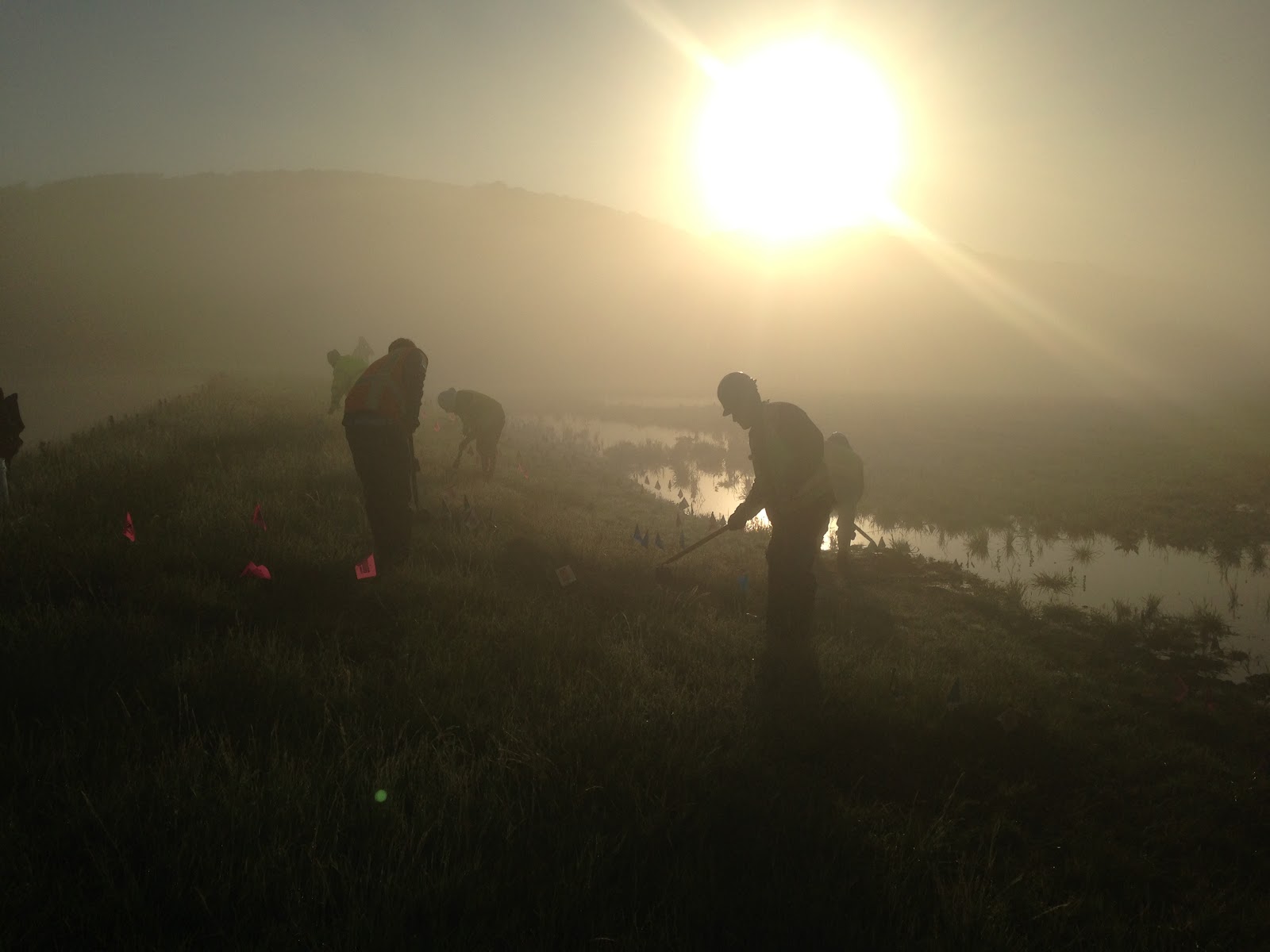 |
| Mike Sotomayor |
Every morning Mike Sotomayor drives 45 minutes to work where he dons a wetsuit and hooks up his hat to multiple hoses before diving in to the freshwater San Andreas Reservoir. As a Navy-trained construction diver, Sotomayor and Underwater Quality Assurance Inspector Ken Paradis are among the few people who get to see, and sometimes only feel, the outlet structures, tunnels and pipes of the Crystal Springs/ San Andreas (CSSA) Transmission System first-hand.
Divers, with the help of cranes hoisting tools and equipment, are lining the old tunnels and “adits” with new epoxy-coated steel pipes with flexible joints. “The old structures were built in the 1920s [and] 40s,” explained Sotomayor.
Paradis added: “We used wire saws to cut out portions of the old structures and moved them to the disposal site in the reservoir.”
The Water System Improvement Program (WSIP) is seismically reinforcing and improving the reliability of the CSSA to ensure that San Francisco and the Peninsula’s emergency and supplemental water supply can be quickly transmitted to customers’ taps.
“The underwater construction associated with the CSSA project is a vital component of construction, as the outlet structures in Crystal Springs Reservoir must be available to provide raw water to the Crystal Springs Pump Station. Similarly, raw water is drawn from the outlet structures in San Andreas Reservoir into the Harry Tracy Water Treatment Plant,” said Project Construction Manager Mark Smith.
 |
The most interesting days on the job for Sotomayor have been when the precast concrete pieces arrived. The work is “like big boy Tetris” with eleven blocks up to 12 by 30 feet. “Linking the pieces underwater with rebar, measuring and properly placing the blocks to line up with the pipe, within inches, requires good visibility,” which is often lacking.
Due to sediment in the reservoirs, the divers are unfortunately not able to stand back and admire their handiwork. While Paradis dives to document that the work conforms to plans and specifications, he can only use video equipment if visibility is good.
Paradis described how they determine the number of divers needed for safety: “There are usually only one or two divers in the water at a time” with a rescue diver or “tender” topside. “Penetration of an adit or culvert requires a second diver to be a tender outside the entrance, and if two divers are working in an adit there will be a third as tender.” He continued: “The deeper the water the less time a diver will have to perform the work.” Construction is taking place at depths up to 110 feet.
Divers wear video cameras, communication lines and lights on their hard hats, and primarily breathe air supplied from the barge. In a situation like this where lives are on the line, pre-dive briefings and constant communication are necessary. “We plan our dive and dive our plan,” Sotomayor recited.














